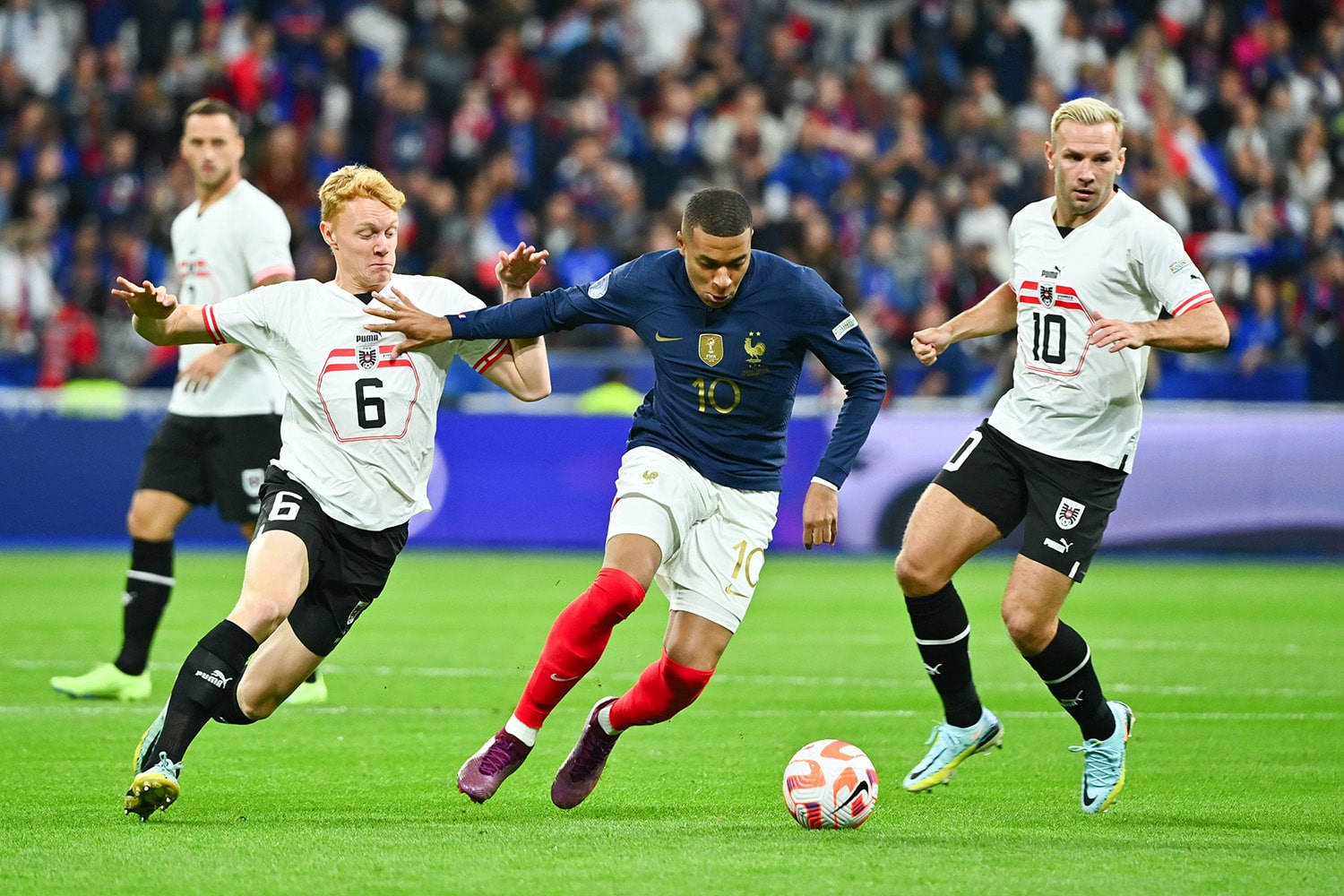
The Unsung Architects: Unpacking the Brilliance of Players with Most Assists Per 90 Minutes
In the fast-paced, goal-obsessed world of football, the striker often claims the headlines, and the goal-scorer basks in the glory. Yet, behind every sublime finish lies an act of creation, a moment of vision and precision that unlocks the opposition’s defence. This is the realm of the assist, and within this realm, an even more nuanced metric stands out: assists per 90 minutes (P90). While raw assist totals tell a story of longevity and consistent involvement, the P90 metric reveals the true efficiency, the concentrated impact of a player’s playmaking prowess, allowing us to identify the most potent architects of attack, regardless of their minutes on the pitch.
Beyond Raw Numbers: Why Per 90 Matters
The traditional assist tally, while indicative of a player’s overall contribution, can be misleading. A player who plays every minute of every game over a season will naturally accumulate more assists than a player of similar quality who misses several matches due to injury, rotation, or tactical decisions. This is where the "per 90 minutes" metric shines. By normalizing the data to a standard 90-minute game, it provides a level playing field, enabling a more accurate comparison of creative output across different players, leagues, and even eras.
For instance, a player with 10 assists in 1,000 minutes of play (equivalent to roughly 11 full games) has a P90 rate of 0.90 (10 assists / 11.1 games). Another player with 15 assists in 3,000 minutes (around 33 full games) has a P90 rate of 0.45 (15 assists / 33.3 games). While the latter has more total assists, the former is demonstrably more efficient and impactful on a per-minute basis. This metric highlights players who consistently deliver incisive passes, crosses, and through balls whenever they are on the field, making every touch count. It emphasizes quality over sheer quantity of minutes played, celebrating the concentrated brilliance of true playmakers.
The Elite Architects: Who Dominates the P90 Assist Charts?
When we delve into the data, certain names consistently emerge at the pinnacle of assists per 90 minutes, showcasing an extraordinary blend of vision, technique, and tactical intelligence.
Kevin De Bruyne (Manchester City): The Modern Maestro
Perhaps the most iconic example of a high P90 assister in contemporary football, Kevin De Bruyne epitomizes the role of the creative midfielder. His ability to deliver perfectly weighted crosses, incisive through balls, and devastating set-piece deliveries is unparalleled. De Bruyne’s vision allows him to see passes that others simply cannot, often dissecting entire defensive lines with a single, laser-guided ball. His high P90 rate is a testament to his consistent impact, whether it’s finding Erling Haaland with a piercing pass or floating a cross onto the head of a defender from a corner. He doesn’t just assist; he orchestrates.
Lionel Messi (Inter Miami/PSG/Barcelona): The Unrivaled Genius
While often lauded for his goal-scoring prowess, Lionel Messi’s playmaking ability is equally, if not more, breathtaking. His P90 assist numbers, especially during his prime at Barcelona, were often among the highest globally. Messi’s assists come from a unique combination of close control, dribbling to draw defenders, and then delivering a perfectly timed pass to a teammate in space. His understanding of the game, his ability to manipulate defenders, and his unselfishness in crucial moments contribute to his incredible P90 rate. He creates opportunities not just by passing, but by bending the game to his will.
Thomas Müller (Bayern Munich): The Raumdeuter’s Unique Vision
Thomas Müller is not your conventional playmaker, yet his assist numbers, particularly on a P90 basis, are consistently excellent. His role as a "Raumdeuter" (space interpreter) means he constantly finds pockets of space, not just for himself but to receive the ball and then lay it off for a teammate. His assists often come from clever link-up play, unconventional movement, and an innate understanding of where his teammates will be. Müller’s high P90 assist rate underscores his unique, often understated, but immensely effective contribution to Bayern’s relentless attack.
Trent Alexander-Arnold (Liverpool): The Fullback Redefiner
Trent Alexander-Arnold has redefined the role of the modern full-back, transforming it into a primary creative outlet. His P90 assist numbers are often comparable to, and sometimes exceed, those of elite attacking midfielders. His ability to deliver pinpoint crosses from deep or wide positions, coupled with his dangerous set-piece delivery, makes him a constant threat. TAA’s high P90 rate highlights how a player in a seemingly defensive position can become a leading assist provider through tactical innovation and exceptional technical skill.
Bruno Fernandes (Manchester United): The High-Volume Creator
Since his arrival in the Premier League, Bruno Fernandes has been a whirlwind of attacking output. His P90 assist rate is consistently high due to his willingness to take risks, attempt ambitious passes, and his central role in Manchester United’s attacking transitions. Fernandes is a volume shooter and a volume passer, and his high success rate on key passes translates directly into a strong P90 assist figure. He might misplace some passes, but the sheer number of chances he creates, often leading to assists, keeps his P90 rate soaring.
What Makes a Player a High P90 Assister? Key Attributes
Beyond just listing names, it’s crucial to understand the underlying attributes that enable these players to consistently deliver assists at such an efficient rate:
- Exceptional Vision and Awareness: The ability to "see" the pass before it materializes, identifying teammates’ runs and defensive vulnerabilities in a split second. This involves scanning the pitch constantly, even without the ball.
- Passing Precision and Range: Not just the ability to pass, but to deliver the ball with the perfect weight, curl, and trajectory for the recipient to comfortably finish or continue the attack. This includes varied passing types: through balls, crosses, cut-backs, and lay-offs.
- Decision-Making Under Pressure: Knowing when to pass, when to dribble, when to shoot, and when to hold the ball. High P90 assisters rarely force a pass; they wait for the optimal moment to maximize the chance of an assist.
- Spatial Awareness and Movement: Understanding where to position oneself to receive the ball in dangerous areas, and how to create space for teammates through intelligent off-the-ball movement or drawing defenders.
- Set-Piece Prowess: A significant number of assists come from corners and free-kicks. Players with exceptional delivery from dead-ball situations naturally see their P90 assist rates boosted.
- Unselfishness and Team Play: While individual brilliance is key, a high P90 assister prioritizes the team’s success by making the extra pass rather than taking a low-percentage shot.
Factors Influencing P90 Assist Rates (Beyond Individual Skill)
While individual brilliance is paramount, several external factors also play a significant role in a player’s P90 assist output:
- Team’s Offensive Prowess: Playing for a dominant, high-scoring team naturally provides more opportunities for assists. If a team is constantly in the opposition’s half and scoring many goals, there are more chances for a player to register an assist.
- Quality of Teammates (Finishers): Even the most perfect pass is not an assist until it’s converted into a goal. Playing alongside clinical finishers significantly increases the likelihood of a pass becoming an assist.
- Tactical Role and System: A player deployed as a pure attacking midfielder (CAM) or a winger given freedom to create will likely have more assist opportunities than a defensive midfielder or a deep-lying playmaker, even if the latter possesses excellent passing range.
- League Strength and Style: Some leagues are more open and high-scoring, potentially leading to higher assist numbers overall compared to more defensively oriented leagues.
- Reliance on Set Pieces: If a player is the primary taker of corners and free-kicks for their team, their P90 assist rate will naturally benefit from these additional opportunities.
- Sample Size and Consistency: While P90 normalizes for minutes, a player with very few minutes might have an artificially inflated P90 rate due to a couple of lucky assists. Sustained high P90 rates over multiple seasons and significant minutes are the true indicators of elite playmaking.
The Evolving Role of the Playmaker in Modern Football
The focus on P90 assist rates reflects the increasing sophistication of football analytics and the recognition of diverse forms of attacking contribution. Modern football demands more from its players, and the traditional No. 10 is no longer the sole source of creativity. Full-backs are now offensive weapons, defensive midfielders are orchestrators, and even strikers are expected to contribute to build-up play and provide assists.
The P90 assist metric helps us appreciate the true impact of these evolving roles. It allows us to compare the creative output of a dynamic wing-back like Alexander-Arnold with a central maestro like De Bruyne, or a "false nine" like Messi with a traditional No. 9 who drops deep. It highlights how different tactical systems can empower different players to become their team’s primary assist provider, often in unexpected positions.
Conclusion
The "assists per 90 minutes" metric is a powerful lens through which to view and appreciate the nuanced art of playmaking in football. It moves beyond superficial totals, offering a deeper understanding of a player’s efficiency, consistency, and concentrated impact on their team’s offensive output. The players who consistently feature at the top of these charts – the De Bruynes, Messis, Müllers, and Alexander-Arnolds of the world – are not just exceptional technicians; they are footballing intellects, possessing the vision, precision, and decision-making skills to unlock the tightest defences with remarkable regularity.
In an era increasingly defined by data and analytics, the P90 assist rate serves as a vital tool for coaches, scouts, and fans alike to identify and celebrate the true architects of attack, the unsung heroes who consistently provide the decisive pass that turns potential into palpable celebration. Their brilliance, though often overshadowed by the final touch, is the very foundation upon which goal-scoring glory is built.



